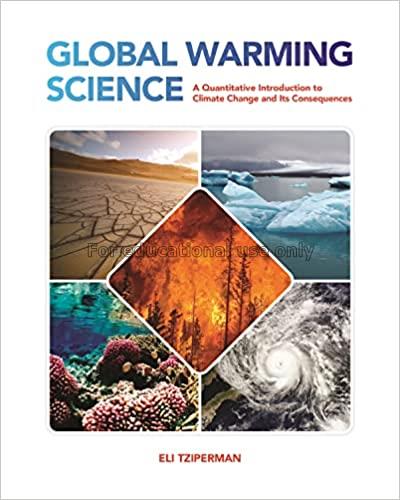
This undergraduate level textbook, based on Eli Tziperman's "Global Warming 101" course at Harvard--a quantitative introduction to the science of global warming. From the greenhouse effect to the consequences of the rise of greenhouse gases, the book discusses a range of topics including sea level rise, ocean acidification, heat waves, droughts, glacier melting, changes to hurricanes, and more. Taking a modular approach to the subject, each semi-independent chapter attempts to explain the physical or chemical mechanisms behind an observed or anticipated change in the climate system, and to demonstrate the statistical (or other) tools used to understand and predict these changes. Much of the study of climate change is based on large-scale, complex "Earth System Models" that attempt to simulate the oceans, atmosphere, land surface, cryosphere and biosphere. However, this book is based on the belief that every one of the relevant subjects can be understood using a pared-down framework, employing a straightforward statistical analysis, a few simple ordinary differential equations, or a set of basic chemical reactions. The approach to the subject is suitable for readers who have taken elementary (first year) undergraduate-level calculus and are aware of basic concepts in statistics; but, the book otherwise assumes no prior college-level exposure to Earth or climate science. To guide readers through analyzing, plotting and understanding problems relevant to the material covered, each chapter concludes with a "Workshop" based on a Jupyter python notebook and an accompanying small data set. The notebook exercises and corresponding datasets are available for download on a supplementary website, and the solutions will be made available to adopting instructors
| Barcode | Call No. | Volume | Status | Due Date | Total Queue | |
|---|---|---|---|---|---|---|
| 1040011775 | SD00006 |
Available |
0 | Please Login |











